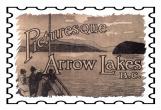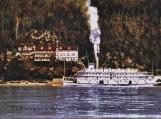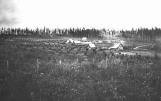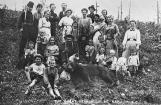1
Had the CPR's indulgence in producing sternwheelers for the Arrow Lakes come to an end? Fred thought so. At the height of the tourist season the Minto, Bonnington, Rossland, and Kootenay were all in operation plus the occasional run by the SS Revelstoke. It took foresight to continuously maintain a profit position in a modern society. Investing heavily in sternwheelers and also rail lines could be ruinous should radical changes take place. Already in 1911 there was a push to connect Nakusp with all the lake towns as far as Edgewood by roadway. More disturbing was the talk of finishing the Columbia Western Railway all the way to the coast. This would negate any need to expand or even maintain operations on the Arrow Lakes. Yes, Fred envisioned the Nakusp shipyard, in the future, being used only for maintenance purposes.But these were the glory years on the lake. Everything was moving ahead with gusto. Fred stuck to his favorite boat and continued to examine the changes to ports along her 120 mile (193.12 km) route.
6
Nakusp in 1911 still held a favored place in relation to settlements on the Arrow Lakes. Arrowhead boasted more and bigger buildings but was restricted in growth agriculturally, by available land and a harsher climate. Neither showed any evidence of mine development, the only promising mineral belt being the Big Ledge. In fact all the locations along the Arrow Lakes proved mineral deficient at this time. What town out of Arrowhead, Nakusp, Burton, Fauquier, Edgewood, Renata, Robson would emerge as the main centre of the Arrow Lakes remained to be seen. All the Lower Lake towns were advancing quickly in the field of agriculture but logging was the only secondary industry and it wasn't supported by any infrastructure apart from a few 3 or 4-man mills.In Nakusp's favor was the industrial base of boats, trains, shipyard, mills and poleyard. Now the ever- expanding agrarian activity at Glenbank, Brouse, Crescent Bay and even Demars strengthened commercial expansion which in turn made the small towns down the lake dependent upon Nakusp for goods and services.






